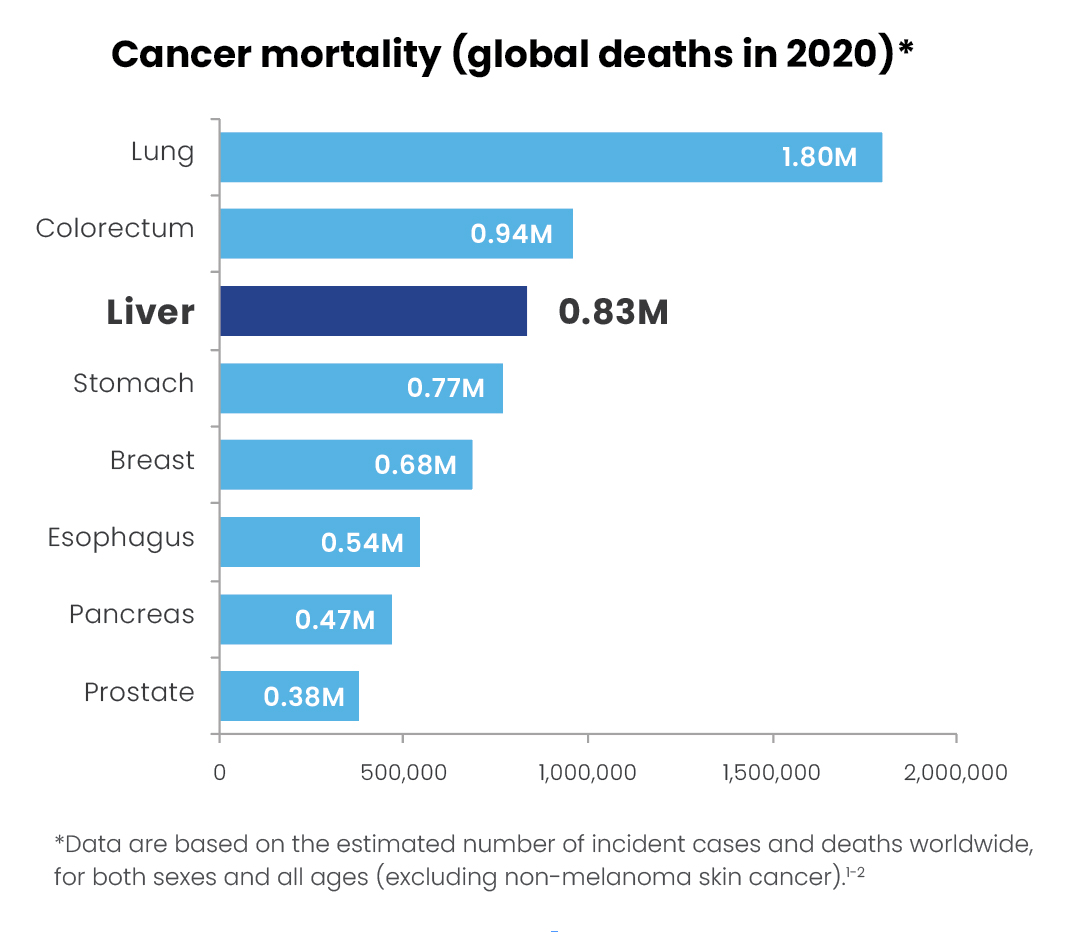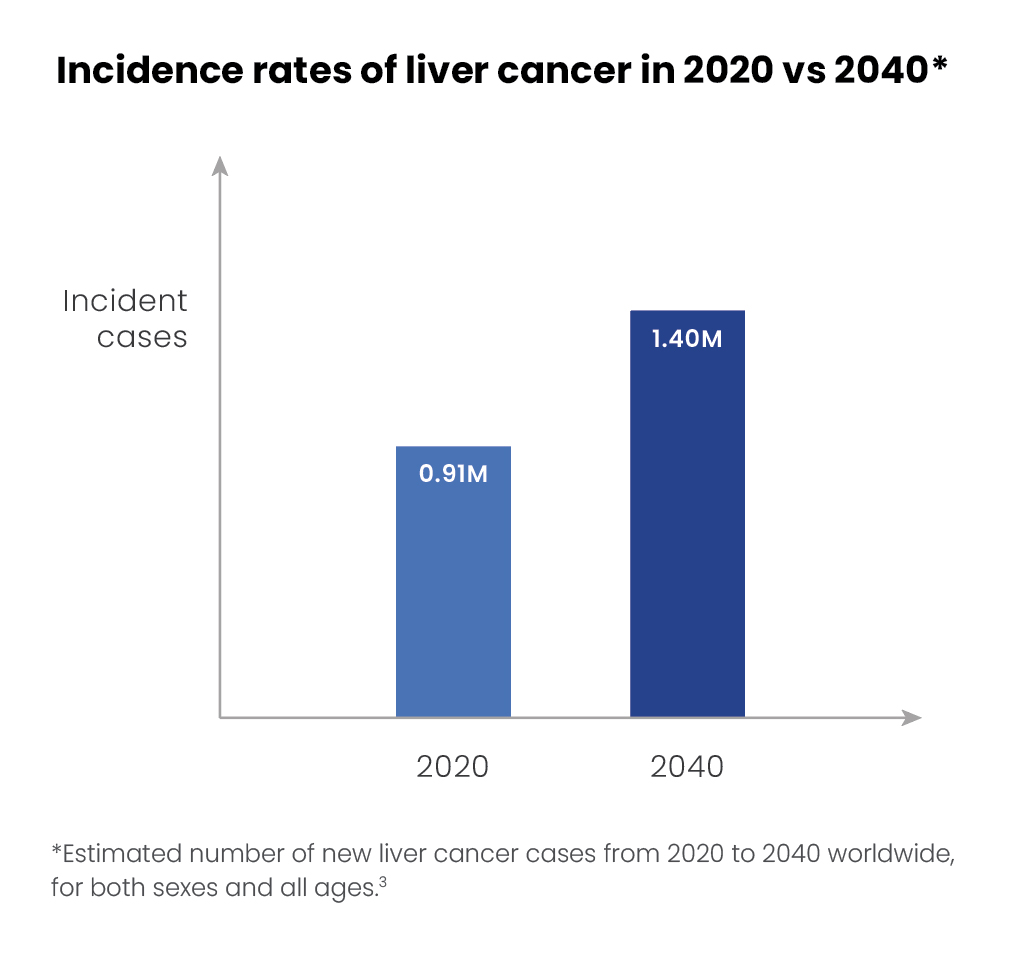Liver Cancer – What Does the Future Hold?
Following our recent interview with Prof. Dr Jeroen Dekervel, gastroenterologist at the University Hospital of Leuven, it is clear that we should not underestimate the global burden associated with liver cancer.
According to the latest available data, liver cancer is the third most frequent cause of cancer-related death worldwide.1,2
Some good news is that there is a trend towards decreasing incidence rates of liver cancer in high-risk countries across Asia, largely because of successful rollout and uptake of vaccination programs against hepatitis B virus.2 In contrast, however, incidence rates in formerly low-risk regions, such as Europe and the USA, have seen a rise in recent years, possibly due to increases in the occurrence of excess body weight and diabetes.2
It is worth noting, therefore, that several risk factors associated with liver cancer, such as obesity, as well as smoking and excessive alcohol consumption, are modifiable.4
A diverse range of treatment options, including surgery, local-regional therapy, and systemic treatments, is available for liver cancer, and what is offered depends largely on the stage of disease following diagnosis.5 Over the past 10 years, the treatment landscape for advanced liver cancer has changed substantially, with the advent of molecular targeted agents and culminating in recent years with the use of immunotherapy.6
To find out more about liver cancer, you can download our infographic in PDF format by clicking on the link below.
Supporting references:
- GLOBOCAN (Cancer Today) 2020
- Sung H, et al. CA Cancer J Clin. 2021;71:209–249
- GLOBOCAN (Cancer Tomorrow) 2020
- Llovet J, et al. Nat Rev Dis Primers. 2021;7:6
- Reig M, et al. J Hepatol. 2021;76:681–693
- Kang S, et al. Front Oncol. 2022;12:821903


